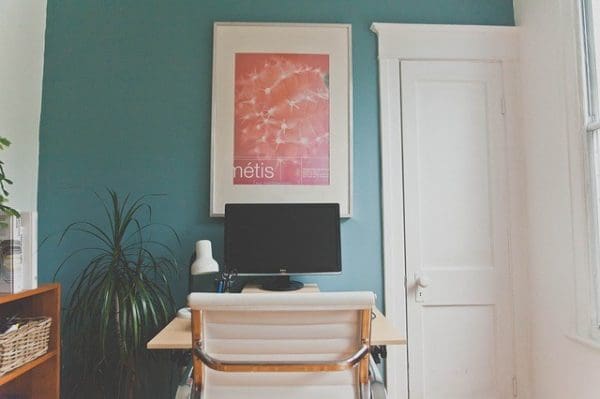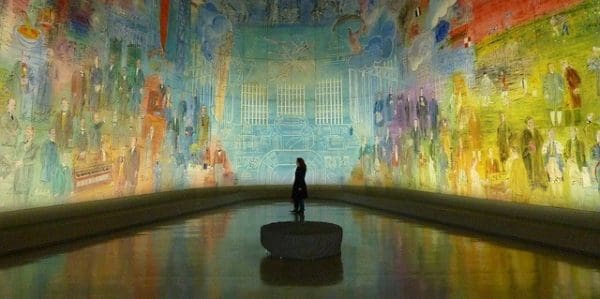Office design plays a bigger role in company culture than most entrepreneurs want to admit. It’s commonly accepted that company culture is worth investing in (culture matters to employees, and money saved on recruitment is money earned). But how do you promote a nebulous concept like culture? Writing it into a handbook doesn’t make it real.
Often times, hiring a good design agency is the first step. Whatever the mission statement might say, the fact is that employees walk into a physical building every day. The physical properties of the space have a tremendous impact on how people experience their daily lives. We’ve seen how office design affects work styles for startups, but how does it affect mentality and happiness?
As a designer, one of the most effective tools at your disposal is art. Here are a few ways in which you can bring creativity into the office environment to make your clients happy.
1) Make the most of paintings, posters, and sculptures
If you’re working with a tech company, chances are that any creativity they show is executed through the computer. Whether it’s marketing, design, or code, tech startup creativity revolves around the digital world.
When your eyes are on the computer screen all day, it’s refreshing to have inspiring surroundings to look at when you get up. Designers can spice things up by installing physical art wherever possible.
For a small startup with an equally small office, wall hangings are the place to start. They come in a variety of materials; canvas can provide a nice, textured alternative to the paper posters and fliers we see too much of in advertising.
For bigger companies, it pays to get creative. Big projects like sculptures for the courtyard are the best way to make every employee realize that they’re working somewhere special. Needless to say, the best (and most expensive) parts of the project should be reserved for common areas, rather than gated away in executive meeting rooms. One of the reasons businesses want a strong culture in the first place is to make sure that today’s interns will want to become tomorrow’s executives.
2) Put murals where you least expect them
Murals are a powerful tool when they’re used right. Unlike paintings, sculptures, and other forms of traditional art, murals and decals can be painted onto any wall, anywhere. No need for prominent displays and ample spacing.
If the office has a high-traffic hall that doesn’t offer much to look at, take a walk down it yourself and see where your eyes are naturally drawn. If there’s any kind of flat surface in your line of vision, you can paint a mural or stick a decal on it. Awkward sizes and viewing distances aren’t a big deal because you can tailor the drawing to the space.
Better yet, murals take well to text-based designs. Sometimes, sticking up few simple words related to the company’s mission or product is all takes to inject life into a drab corridor.
3) Employees can make their own art – encourage decentralization
In Fast Company‘s profile of innovative corporate headquarters, we see that Facebook’s campus goes through tiny changes every day. You might find a sign or a poster mysteriously hanging in a hallway, or maybe an office manager decided the weekend before to change the color of the mugs in the kitchen.
Giving individual employees the freedom and power to affect the physical office space is as important as empowering them to affect the office culture. Ideally, one would lead to the other. By encouraging decentralized creativity, you give employees a sense of ownership and responsibility.
As a designer, it’s difficult to encourage this behavior directly, but you can provide the tools that make it possible. Creative blank slates like whiteboards, toy blocks, and cork boards give employees a chance to express themselves. More importantly, they increase the odds of coming into the office every day and seeing something new.
If you’re lacking inspiration, platforms like Share Your Office offer a convenient look into popular shared offices and coworking spaces. In the end, however, it’s not an office designer’s job to define or build company culture. You’ll have to depend on management to take what you offer and develop it.
At the same time, you’ll have a happier client and a cooler project in your portfolio if you keep in mind how employees will actually engage with the space. Office design is not a standalone work of art; it’s dynamic. Embrace this dynamism in your work, and you’ll make a real difference in every employee’s life.







1 Comment